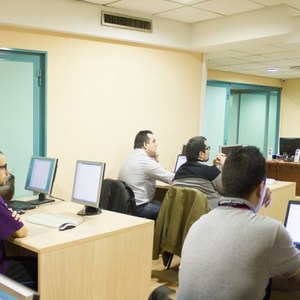
A relative told me in 2001 that cell phones would never be popular and he would “never own one of those contraptions.” In 2007, he purchased a flip phone and told me he would not text or call me on the cell phone as it was “only to be used in case of emergencies.”
A relative told me in 2001 that cell phones would never be popular and he would “never own one of those contraptions.” In 2007, he purchased a flip phone and told me he would not text or call me on the cell phone as it was “only to be used in case of emergencies.” In 2009, I was flabbergasted when I received a text wishing me a happy birthday. He recently told my daughter, “I can’t live without my phone!” As the saying goes, never say never.
Hesitation with technology is like the funding uncertainty of the current federal budget. Do you want to enter the new school year with money for new technology? With the school year winding down, summer break is a perfect time to write next year’s school technology grants.
The following tips, websites and current information can help you develop winning technology grants.
Contact Those You Already Know
As with any research, the first things you should consider when looking for school technology grants are what and who you know; the contacts in your rolodex (aka Contacts in your phone), corporations and non-profits you work with. These simple ideas can save you time, frustration and earn you money for technology. Fundraising statistics show that people, foundations and corporations give to people they know, and not necessarily give to a cause they feel strongly about.
Test the waters this summer with your contacts to bring in that much-deserved money for technology.
Track STEM Opportunities Online
A great place to start your online school technology grants search is Stemgrants.com or Stemfinity.com. These websites are one stop shopping for all things STEM to include technology grants. Funding opportunities are bountiful, but I would recommend reading “10 Errors Proposal Teams Should Avoid,” prior to starting.
Grant funding opportunities change as deadlines pass and the latest programs become available.
Leverage Local Connections
A foundation that embraces education and STEM is Corning, the glass, stoneware and optical physics giant. A local school in Corning, New York, The Alternative School for Math and Science (ASMS) opened in January 2004, the result of a group of concerned citizens, parents and educators. These civic leaders knew the importance of STEM and more importantly knew employees at Corning. They followed funder relationship advice, and leveraged their Corning contacts sitting in the community’s front yard.
Corning donated and fully funded a 35,000-square foot ASMS school building. In turn, Corning leaders had a long-standing partnership with Samsung, whom together fully funded ASMS and became the first independent school in the United States to adopt the full Samsung School solution across all grades. The Samsung School solution is an integrated one-to-one learning platform combining Samsung Galaxy tablets, interactive whiteboards and other technology, melded together with powerful interactive classroom software.
More than 75 percent of ASMS graduates further their higher education in the STEM field; the national average is 16 percent.
Connect on Common Ideals
Small school districts without private sector giants in their front yards can also attract school technology grants from foundations. Captain Planet Foundation makes grants available to schools with an operating budget less than $3 million dollars.
The foundation’s EcoTech grants are created for digitally savvy students so they do not have to choose between “the screen” or “the green.” In this technologic theme, the Captain Planet Foundation inspires teachers and students to discover how technology can solve some of the environment’s biggest challenges. Past funding included the merging of robotics and sensors to search lakes, collect data and organize clean-ups; and developing an aquaponic and hydroponic system using remote sensors.
So go out and phone, text or email a contact, research and write school technology grants or apply for an EcoTech Grant for your school. Embrace the summer, but most importantly don’t take a break applying for technology grants.
Copyright © 2024 EducationGrantsHelp.com. All rights reserved.
